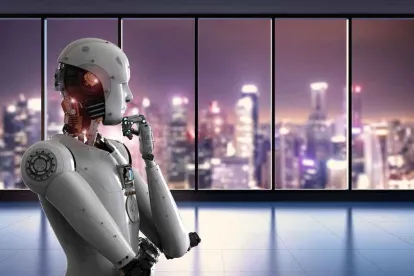The question whether an artificial intelligence (“AI”) system can be named as an inventor in a patent application has obvious implications for the life science community, where AI’s presence is now well established and growing. For example, AI is currently used to predict biological targets of prospective drug molecules, identify candidates for drug design, decode genetic material of viruses in the context of vaccine development, determine three-dimensional structures of proteins, including their folding form, and many more potential therapeutic applications.
In a landmark decision issued on July 30, 2021, an Australian court declared that an AI system called DABUS can be legally recognized as an inventor on a patent application. It came just days after the Intellectual Property Commission of South Africa granted a patent recognizing DABUS as an inventor. These decisions, as well as at least one other pending case in the U.S. concerning similar issues, have generated excitement and debate in the life sciences community about AI-conceived inventions.
The AI system involved in these legal battles across the globe is called “Device for Autonomous Bootstrapping of Unified Sentience” aka “DABUS” developed by Missouri physicist Dr. Stephen Thaler (Thaler). In 2019, two patent applications naming DABUS as the inventor were filed in more than a dozen countries and the European Union. Both applications listed DABUS as the sole inventor, but Thaler remains the owner of any patent rights stemming from these applications. The first application is directed to a design of a container based on fractal geometry. The second application is directed to a device and method for producing light that flickers rhythmically in a specific pattern mimicking human neural activity. In addition, an international patent application combining the subject matter of both applications was filed under the Patent Cooperation Treaty (PCT).
The South African patent based on the PCT application issued without debate about the invention’s nonhuman origin. In contrast, during prosecution of the PCT application in Australia, the Deputy Commissioner of Patents of the Australian Intellectual Property Office took the position that the Australian Patents Act requires the inventor to be human and allowed Thaler’s non-compliant application to lapse. Thaler subsequently sought judicial review, asserting that the relevant Australian patent provisions do not preclude an AI system from being treated as an inventor, and that the Deputy Commissioner misconstrued these provisions. The court agreed, finding that the statues do not expressly exclude an inventor from being an AI system. In its decision, the court describes in detail the many benefits of AI in pharmaceutical research, ranging from identifying molecular targets to development of vaccines. In view of these contributions, the court cautioned that no narrow view should be taken to the concept of “inventor.” To do so would inhibit innovation in all scientific fields that may benefit from the output of an AI system. The court further opined that the concept of “inventor” should be flexible and capable of evolution. In the same vein, the relevant patent statutes should be construed in line with the objective of promoting economic wellbeing through technological innovation. Thus, while stopping short of allowing a non-human from being named a patent applicant or grantee, the Australian court permitted inventorship in the name of an AI system under Australian statutory provisions.
To date, the U.S. has not acknowledged the legality of nonhuman inventorship. In response to the filing of two U.S. patent applications in 2019 identifying DABUS as the sole inventor on each application, the U.S. Patent and Trademark Office (USPTO) issued a Notice to File Missing Parts for each application requiring Thaler to identify an inventor by his or her legal name. Upon several petitions by Thaler requesting reconsideration of the notice for each application, the USPTO last year rejected the idea that DABUS, or any other AI systems, can be an inventor on a patent application. The USPTO found that since the U.S. statutes consistently refer to inventors as natural persons, interpreting “inventor” broadly to encompass machines would contradict the plain reading of the patent statues. In reaching this decision, the USPTO also cited earlier Federal Circuit decisions which found that state governments and corporations could not be listed as inventors because conception of an invention needs to be a “formation in the mind of the inventor” and a “mental act” by a natural person. In response, Thaler sued Andrei Iancu, in his capacity as Under Secretary of Commerce for Intellectual Property and Director of the USPTO as well as the USPTO itself in Virginia federal court.
In that pending action, Thaler argued that the USPTO’s decisions in both applications effectively prohibit patents on all AI-generated inventions, producing the undesirable outcome of discouraging innovation or encouraging misrepresentations by individuals claiming credit for work they did not perform. In addition, according to Thaler, there is no statute or case in the U.S. holding that an AI cannot be listed as an inventor. Accordingly, he urged the court to undertake a dynamic interpretation of the law. Furthermore, Thaler claimed that a conception requirement should not prevent AI inventorship because the patent system should be indifferent to the means by which invention comes about. For these reasons, Thaler sought reinstatement of both patent applications and a declaration that requiring a natural person to be listed as an inventor as a condition of patentability is contrary to law. While the court has not yet ruled on the issues presented, presiding Judge Leonie Brinkema remarked in a summary judgment hearing held in April of this year that the issue seemed to be best resolved by Congress.
Even if nonhuman inventorship becomes widely recognized, other important questions of AI and patent law will remain. Among these is the issue of ownership. In most jurisdictions, in cases where the applicant is different from the inventor, the applicant needs to show it properly obtained ownership from the inventor. The obvious question that arises is how can a machine like DABUS, which cannot “hold” title to an invention, pass title to an applicant like Thaler under the current patent system. The likely answer is that legislative changes in the U.S. and around the world are needed to expand the limits of patent inventorship and ownership to accommodate such arrangements. When and if that will happen is unclear, but the decisions from Australia and South Africa have certainly raised the profile of the debate surrounding inventorship and ownership of AI conceived inventions.




 />i
/>i

